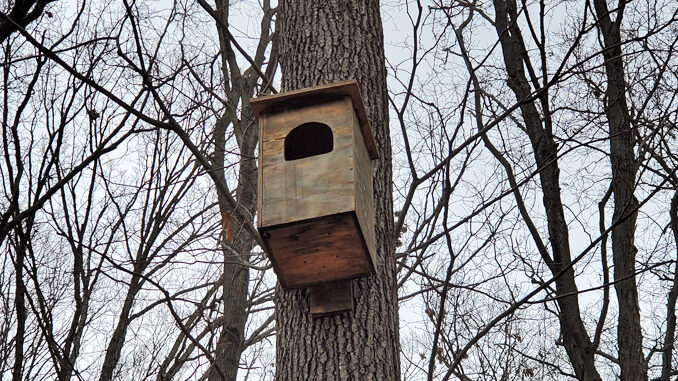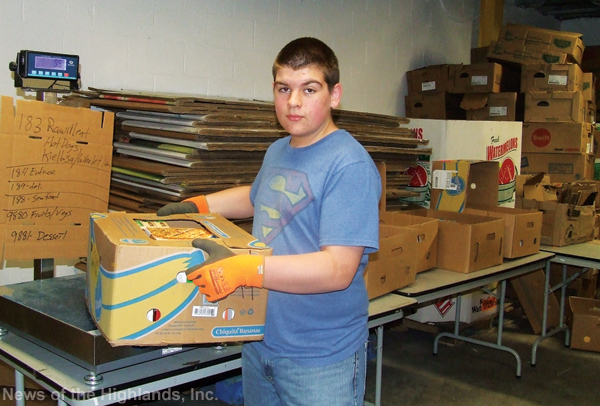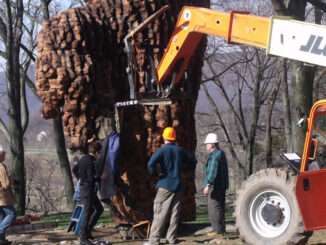
Scout’s owl houses will help the environment
Akilesh Kootala started his Eagle Scout project when he was a senior at Cornwall High School, but he didn’t receive the award until nearly two years later due to scheduling conflicts between Eagle Board and his being away at college at the New Jersey Institute of Technology.
“It is very rewarding,” Kootala said of finally receiving the award last month. “It’s the culmination of all my years of scouting, putting everything I learned to work with my handyman skills, going camping, learning about nature around us and doing things to help it. Growing up in New Windsor, surrounded by nature, it’s pretty nice.”
When Kootala was ready to start planning his Eagle project, scoutmaster Wynn Gold put him in touch with Anthony Davidowitz, deputy director of operations, administration, and legal affairs at Storm King Art Center. Davidowitz took the young scout on a tour of the art center’s grounds offering a number of project suggestions along the way. Kootala eventually settled on constructing owl houses and brush piles.
“The art center really wanted to take on an environmentally related project,” Kootala said. So they thought about building owl houses and brush piles because the predator population, like owls, is going down. Due to that, small rodents like rats, ticks, and other animals lower on the food chain are less controlled. By building owl houses we provide shelter for the predators and building brush piles attracts the smaller animals toward the brush piles to give the owls food.
Owls would stay there and decrease the population of animals lower down on the food chain thus decreasing the amount of ticks. Orange County is known for having some of the highest numbers of Lyme disease.
“The art center really wanted to take on an environmentally related project.”
Akilesh Kootala
Kootala started creating plans for the project around Aug. 2018 and didn’t set to work until December of that year. During the planning process he talked with experts in forestry and ecology like John Brady, former manager of Black Rock Forest. They discussed the best locations on the property to build the owl houses and brush piles. Brady also offered information on the different species of owls living in the area and provided some books about owl house and brush pile designs, as well as the ecosystem of the area.
Fund raising for the project was not required as the art center covered the cost for any materials which were not found on the grounds.
When Kootala scheduled his work days, he had six volunteers helping construct two owl houses one day and another seven contributing to two brush piles on another.
The owl houses measured two feet tall, a foot wide, and a foot in depth. They were made of pine because it’s a good wood for the outdoors, said Kootala. The pieces of wood were cut to size and screwed together and then covered with a waterproofing stain to increase their longevity.
For the brush piles, the volunteers had to clear the ground of leaves and rocks and then dig seven foot by seven foot holes. Rocks sourced from the area were placed around the perimeter of the brush piles, as well as on the bottom of the holes. Fallen branches and twigs were placed in a pyramid to create the brush piles.
One of the challenges Kootala faced throughout the project was finding good weather to complete the work. Taking on a leadership role proved to be difficult in the beginning because of the immensity of the project rather than a lack of experience.
“I was senior patrol leader of the troop which I took on around the same time I started this project so I was fairly new to holding onto a large leadership position. After talking with everyone, I learned I had to keep in touch with people so I don’t fall behind in time and everyone is on the same page.”
Finding volunteers and scheduling work sessions that were convenient for others also proved to be difficult.
Kootala said he hasn’t been back to the art center since completing the project, but he was informed owls have been spotted in the area which weren’t there in the past.



